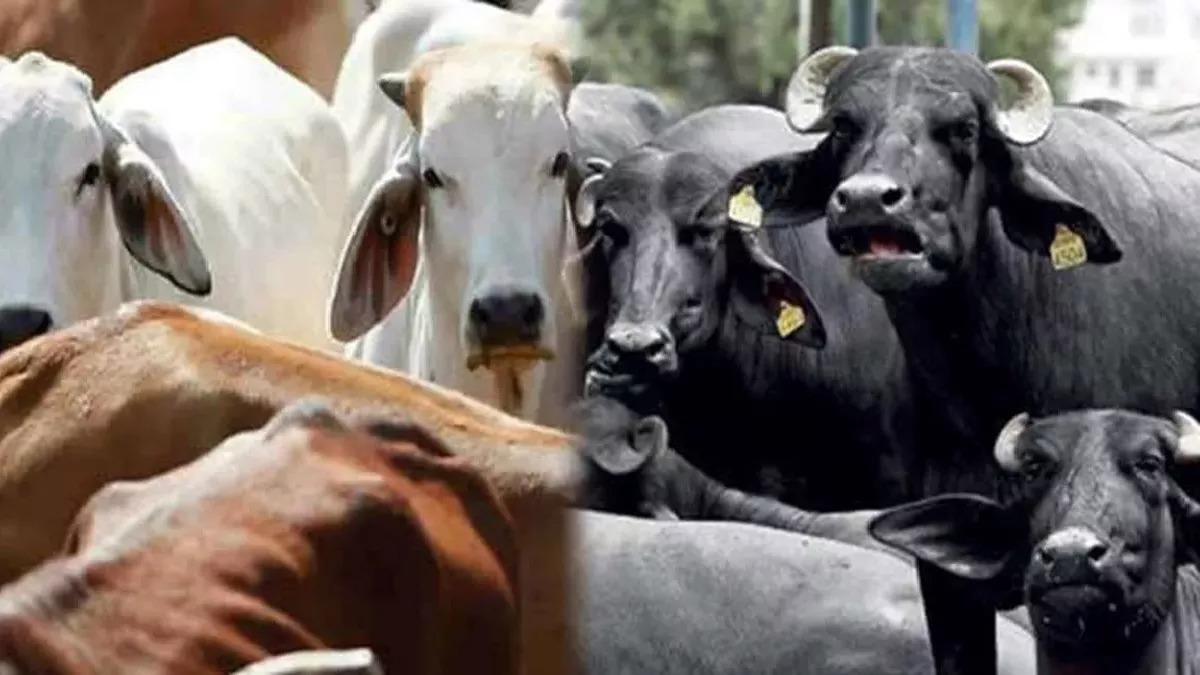
New Delhi: The practice of artificial insemination has greatly changed the genetics of indigenous animals. This has increased the quantity of milk and India has become the world's largest milk producer, but its other side is that the quality of milk has declined.
India has developed such a genomic chip that will instantly tell the genetic status of the last seven generations of cows and buffaloes. This chip will be helpful in preserving the indigenous breeds of cattle and increasing the income of cow-keepers along with setting an example of self-reliant India. The chip is ready, which can be launched by Prime Minister Narendra Modi on the occasion of National Milk Day on 26 November.
Conditions of Indian animals are different
The genetic history of an organism is studied through genomic chip. Many developed nations have improved the genetics of cattle for the prosperity of the dairy sector, but the chip prepared by them is suitable for their own animals. The conditions of Indian animals are different. Therefore, the Ministry of Animal Husbandry has made its own chip for the selection of indigenous and best breeds of cows and buffaloes, which has been named 'Gau Chip' for cattle and 'Mahis Chip' for buffaloes.
Due to artificial insemination, more than two-thirds of the generations of indigenous cows in our country have become hybrid breeds. Gokul Mission was started in 2014 for scientific conservation and promotion of indigenous breeds.
For the first time in the country, bovine IVF was encouraged. But despite the subsidy, this technique is proving to be costly for the farmers. Another technique is sex sorted semen, which is available for Rs 200 per dose. Three doses have to be taken at a time for one cow. Through this, cows give birth to female calves in 90 percent of the cases. But the breed cannot be determined through this.
How will the chip work?
Conservation of indigenous breeds of cows like Gir, Kankrej, Sahiwal and Ongole is a big challenge. Animals with high genetic qualities will be selected at an early age through the chip. As soon as a drop of blood is put on the chip, it will be immediately known which breed the calf belongs to. Many unknown genes can also be seen in the blood spot along with some known genes.
Animal Husbandry and Dairy Minister said this
According to Fisheries, Animal Husbandry and Dairy Minister Rajiv Ranjan alias Lallan Singh, usually after seven generations there is a big change in the breed. When it is known how much of the indigenous origin of the heifer or calf is left, it will be used accordingly. When the calves grow up, by fertilizing the semen of the best quality bull in a cow of the best breed, a healthy heifer of the best breed will be born, from which more quantity of milk (A2) can be taken.
He further said that it will also be more expensive than the hybrid breed cows, which will increase the income of the farmers. Analysis of the data of the chip will also help in knowing the effect of medicines and diseases on cows and buffaloes, which will help in maintaining better health.
--Advertisement--

 Priya
Priya Share
Share



